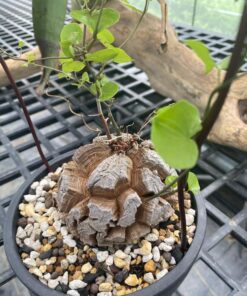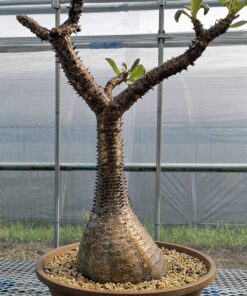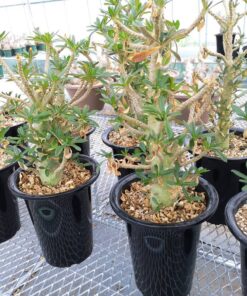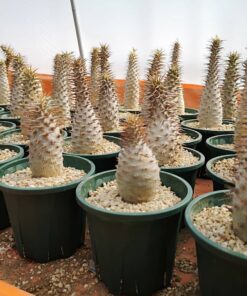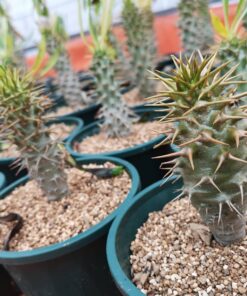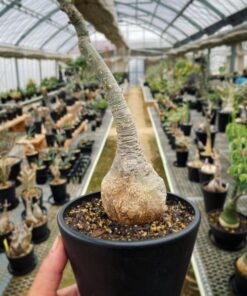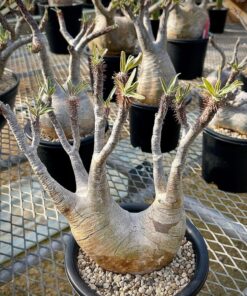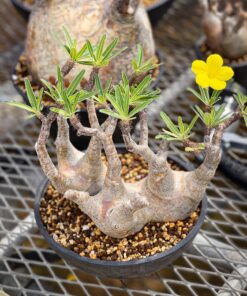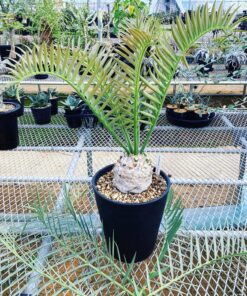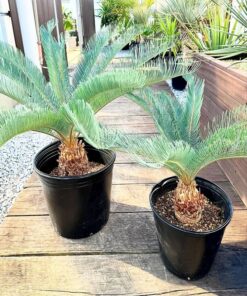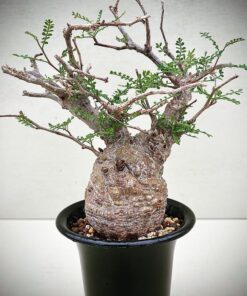Dioscorea Elephantipes
$150.00
Dioscorea elephantipes, the elephant’s foot or Hottentot bread, is a species of flowering plant in the genus Dioscorea of the family Dioscoreaceae, native to the dry interior of South Africa.
It is a deciduous climber. It takes the name “elephant’s foot” from the appearance of its large, partially buried, tuberous stem, which grows very slowly but often reaches a considerable size, often more than 3 m (10 ft) in circumference with a height of nearly 1 m (3 ft 3 in) above ground. It is rich in starch, whence the name Hottentot bread, and is covered on the outside with thick, hard, corky plates.[1]
Primarily a winter grower, it develops slender, leafy, climbing shoots[1] with dark-spotted, greenish-yellow flowers in winter (May or June in habitat)[2] The flowers are dioecious, with male or female flowers occurring on separate plants.
Related products
All Plants
All Plants
All Plants
All Plants
All Plants
All Plants
All Plants
All Plants







